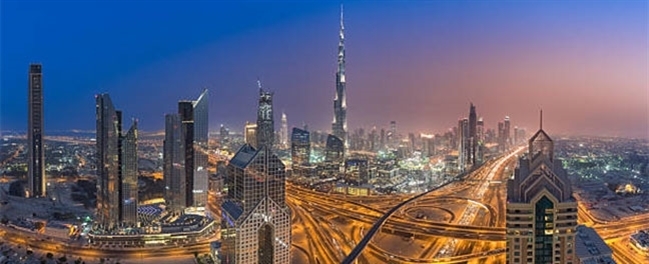
The Great Pyramid of Giza is 140 meters, but despite this magnificent architecture, it was not easy and convenient to go up to the top floors. The world's first tall buildings began to be built in the late 1800s. Their height was approximately 30 to 40 floors (approximately 160-170 meters). The biggest problem of high-rise buildings was fast and easy access to the top floors. In particular, the developments in terms of elevators, lighting, security, communication, integration and other technologies have accelerated the construction of high-rise buildings. The Burj Khalifa is the tallest building in the world with a height of 828 meters, while the Empire State has 100 floors and is over 380 meters. Currently, buildings are constructed with heights of more than 1000 meters i.e. 1 kilometer. If a normal elevator (1-1.5m/sec) goes up to the top floor without stopping, you have to travel for some 15 minutes. Do not forget your car keys at home! Of course, with the elevator technologies of today, you can travel as fast and comfortably as cars. However, high-rise buildings pose many threats as well as many good benefits.
Elevator Management in Intelligent Buildings »
In case of the occurrence of a disaster such as earthquake, fire, flood etc., how will tens of thousands of people in the building be informed, how will they be protected, how will they be evacuated, how will a stampede be prevented and how will they be managed against many other scenarios? In the simplest terms, with human-independent automation! First, the scenario should be drafted with professional consultants and then the scenarios can be implemented with high quality and powerful hardware and software. If the right design, right hardware, right software and right workforce are not used in such facilities, it may harm too many people.
Emergency Scenarios »
Physical security information management (PSIM) has become more important in recent years. PSIMs provide unmatched support to the operator in the field of case management. PSIM software assesses alarms from all sources and displays appropriate instructions on the screen. It expects complete obedience from the operator. The operator views an instruction suitable for the type of case on the screen. He has to fulfill each line one by one and makes a very quick intervention by approving the processes and entering the notes. The distinctive advantage of PSIMs is that all necessary systems are integrated into the PSIM’s common interface. In an ideal system, the operator can simultaneously view the information from multiple security systems on an interactive video wall or client computer. The consolidated information in the PSIM software is much faster than looking at individual systems one by one and ensures great situational awareness.
To Whom Do You Entrust Your Life and Millions of Lira Systems in Emergency Cases? »
Automation and comfort are usually directly proportional to each other. For example, before you arrive at your facility, the temperature of the environment is idealized, and when you leave, it can turn off all lights and unnecessary electrical devices, making serious energy savings and providing high comfort. When security is involved, security automation and comfort are inversely proportional to each other because, for security, you need to make verification with a card, password or biometric data to move to different rooms in a facility where almost all doors are locked, and this will slow down your movement speed, or as you can only go to the floors that you are allowed to access by elevator, you will not be able to visit any neighbors that you wish.
Energy Saving or Energy Efficiency? »
High-rise buildings continue to be developed in a very intelligent, very integrated and, in part, very comfortable way. As technology develops on the IoT and automation side, the number of autonomous devices that have more artificial intelligence will increase, and high-security, energy-saving, efficient, more livable, more comfortable and human-friendly facilities with less carbon footprints will be constructed.